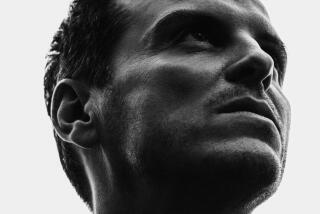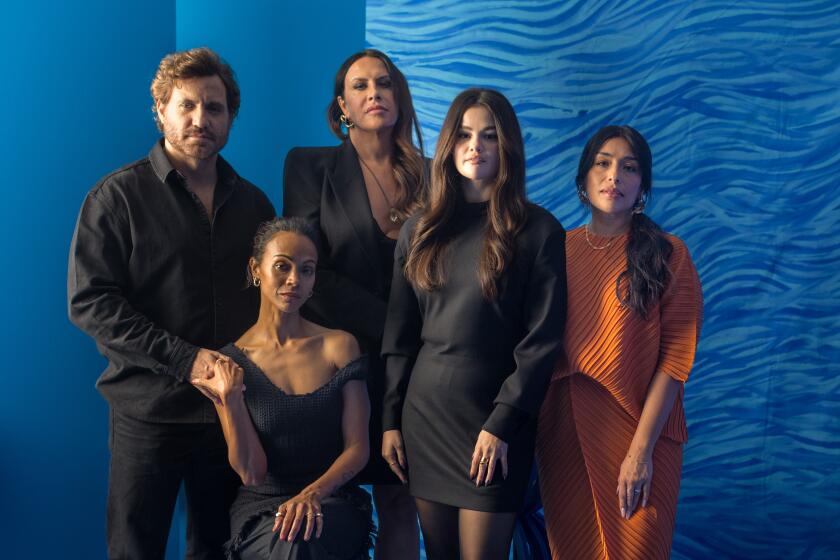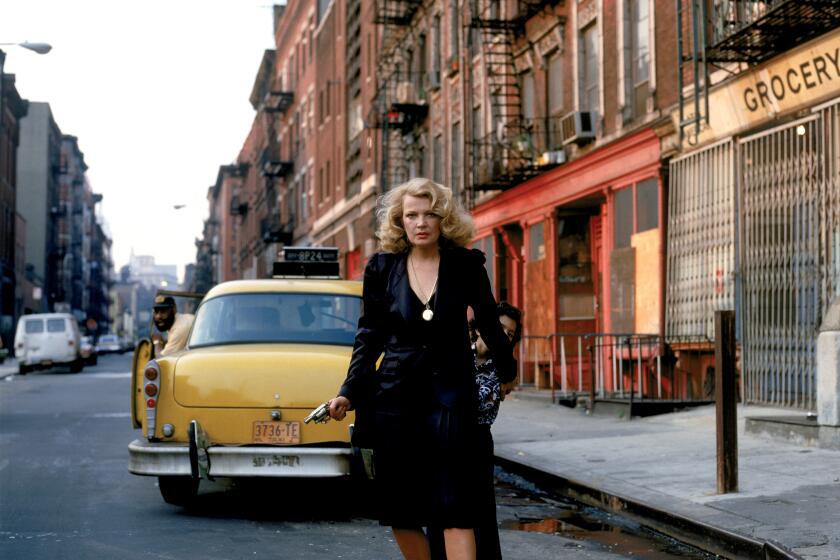Randolph Scott, Archetype of Movie Cowboys, Dies at 89
Randolph Scott, the tall, handsome cowboy of countless Hollywood Westerns, an actor whose square-jawed countenance and poker-faced stare became prototypes for the generation of Western heroes who followed him, died Monday at his Bel-Air home. He was 89.
One of the top box-office stars of the late 1940s and early ‘50s (and in the top 10 from 1950 to 1953), Scott had retired in 1963 after a 32-year career that produced 96 movies.
One of the first actors to form his own production company--during the 1940s when most other stars were under contract to major studios--Scott was thus also one of the first to have a measure of control over what movies he made, and over their box-office profits. A multimillionaire with extensive investments in real estate, he was considered one of Hollywood’s wealthiest actors.
Although Scott never won an Oscar, his lanky cowboy heroes--soft-spoken but resolute, quiet but fearless, virile but at heart loners--became so famous that the image of manhood Scott created became, to post-World War II movie-goers, synonymous with the American ideal.
Unlike fellow actors who chafed at type casting, Scott claimed not to tire of his Westerns. “I believe in letting well enough alone,” he told Hedda Hopper in a rare interview. “I’m not looking for new fields to conquer.”
He also praised the Western as “the mainstay of the (film) industry. They are a type of picture families can see and enjoy.”
And, he added, “they always make money.”
After the 1946 “Badman’s Territory,” his first box-office success as a Western hero, he made 39 big-budget Westerns over the next 16 years, including “The Nevadan” (1950), “Hangman’s Knot” (1953), “The Stranger Wore a Gun” (1953), “Decision at Sundown” (1957) and “Ride Lonesome” (1959).
He departed from his hero type once, in his last film, “Ride the High Country.” Co-starring with Joel McCrea, Scott played an aging, once-respected lawman who runs a shooting gallery at a carnival and plots to hijack a shipment of gold. Some critics called it his finest work.
McCrea, informed Monday of Scott’s death, said working with Scott “was one of the most pleasant experiences I ever had because he was a Southern gentleman. I take my hat off to him.”
Off camera, Scott cultivated the image of that well-bred, well-dressed Southern gentleman-financier, definitely not a cowboy. (He reportedly was the only actor accepted into the Los Angeles Country Club).
“There was not one item about his place to suggest he’d ever appeared in a Western,” Hedda Hopper said after interviewing him at his home. “Randy, dressed in sports clothes, looked about as Western as the Brooklyn Bridge,” she wrote.
Actor Lee Marvin once recalled Scott sitting on a film set, immaculately attired, while his stunt man went by in a burning stagecoach. “He didn’t even look up,” Marvin said. “Just went on reading the Wall Street Journal.”
He was born Randolph Crane Scott on Jan. 23, 1898, in Orange County, Va., the son of an administrative engineer and a woman from a genteel North Carolina family. The only son, with five sisters, he was raised in Charlotte, N.C., and was sent to private schools, including the Woodbury Forest preparatory school in Virginia, then attended the University of North Carolina.
He studied textile engineering and planned a career as a textile manufacturer. That changed, however, with a vacation trip to California with a friend. Through family connections, his father supplied him with a letter of introduction to Howard Hughes, asking the millionaire to arrange for the boys to tour a studio.
As Scott later recalled, Hughes instead suggested that they work in a picture for a few days. They became extras in a saloon scene for a 1928 movie called “Sharp Shooters.”
“I’m a great believer in fate,” he said years later. “I think things happen in spite of, and despite, yourself.”
Hughes also apparently arranged for him to have a minor role in the silent, “Far Call,” and to do a screen test for Cecil B. DeMille, who needed a college-boy type for his first talkie, “Dynamite.” The results were poor, but Scott was used as an extra, along with another star-to-be--Carole Lombard.
Opting not to go back home, Scott decided to learn how to act and signed with the Pasadena Playhouse. Two years later, a friend cast him in the role of a young flier in a play being staged on Hollywood Boulevard. His performance caught the attention of talent scouts, and he landed a contract with Paramount in 1931.
His first featured role was in “Hot Saturday,” a 1931 film with Cary Grant. He and Grant became good friends and later shared a Hollywood home that came to be called “Bachelor Hall.”
His rugged good looks won him roles in such films as “Roberta” (1934) with Irene Dunne, Ginger Rogers and Fred Astaire, “She” (1935) with Helen Gahagan (Douglas), “Go West Young Man” (1936) with Mae West and “My Favorite Wife” (1940) with Irene Dunne and Cary Grant.
His best-remembered films, however, are those known as the “Scott-Brown Westerns,” movies made in collaboration with producer Harry Joe Brown. In these films, like “Rage At Dawn” (1955), “Buchanan Rides Alone” (1958) and “Comanche Station” (1960), the central character was a hero (Scott), standing alone in a battle of good versus evil. And, of course, evil always lost.
In 1936 he married Marion DuPont Somerville, an heiress of the DuPont fortune. An equestrienne, she spent most of her time in the East and was rarely seen with Scott. After they divorced, he married former actress Patricia Stillman in 1944. They adopted two children, Christopher and Sandra.
He kept his personal life well out of the limelight. “I don’t like publicity,” he said in a 1961 interview, adding that he followed the advice once given by Broadway impresario David Belasco: “Never let yourself be seen in public unless they pay for it.”
At Scott’s request, there will be no funeral or memorial service. In lieu of flowers, donations are asked to the research program of UCLA Medical Center or the Eliot Corday Research Fund at Cedars-Sinai Medical Center. Corday was Scott’s physician.
In retrospect, perhaps Scott’s persona as the sovereign of the saddle was best captured in Mel Brooks’ spoof of Westerns, “Blazing Saddles.” When the sheriff in that film pleads with the good folk of the town for a few hours in which to rescue them all from a horde of thieves and killers, they resist his pleas and want to flee.
“You’d give it (the time) to Randolph Scott,” the sheriff laments.
“Randolph Scott ! “ the crowd responds, in the tones of awed reverence normally reserved for icons.
More to Read
Only good movies
Get the Indie Focus newsletter, Mark Olsen's weekly guide to the world of cinema.
You may occasionally receive promotional content from the Los Angeles Times.










